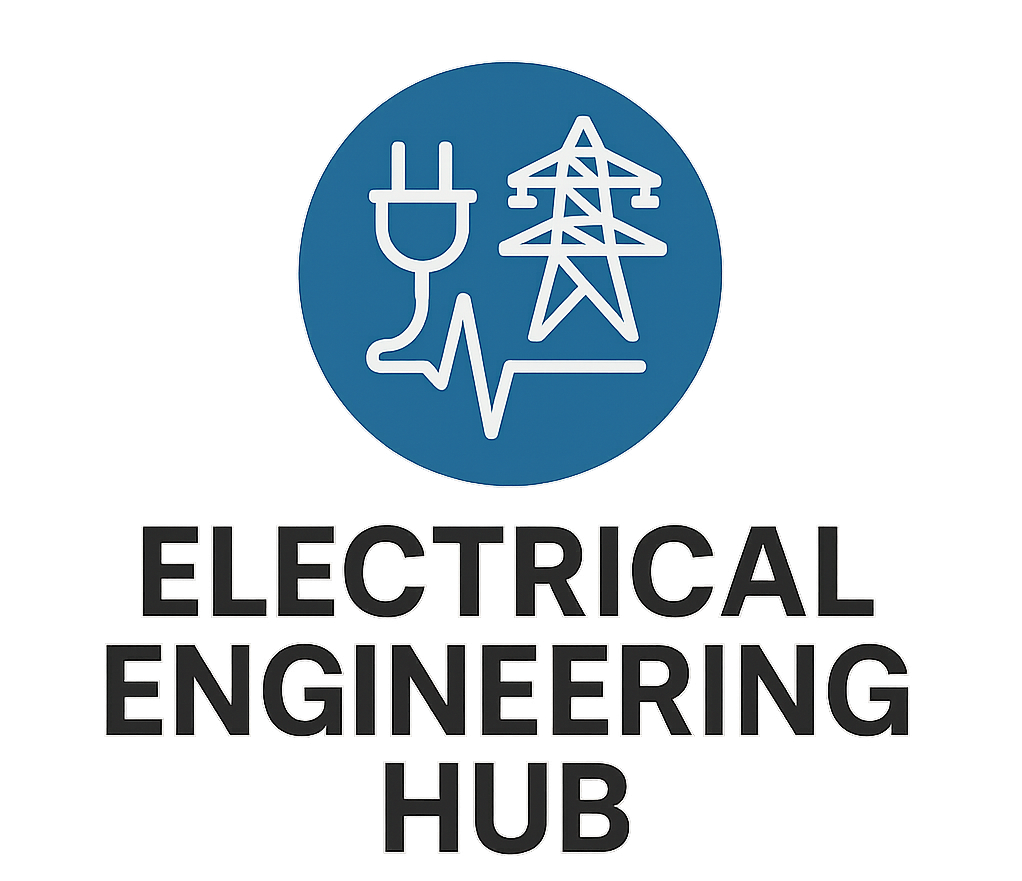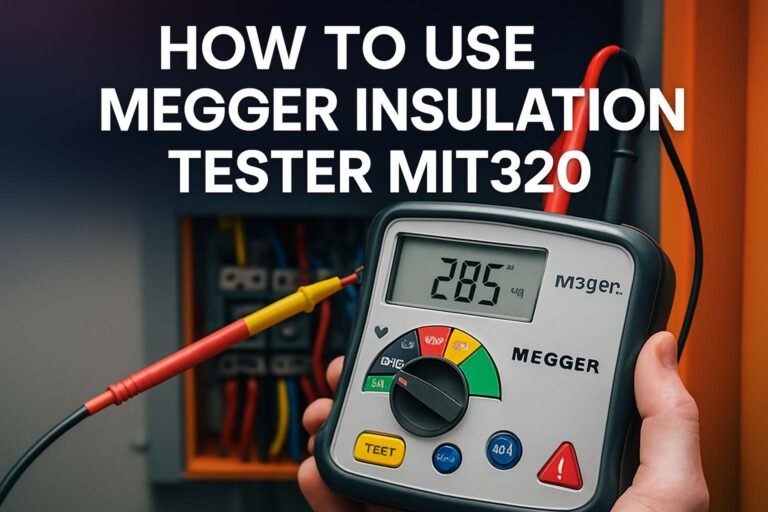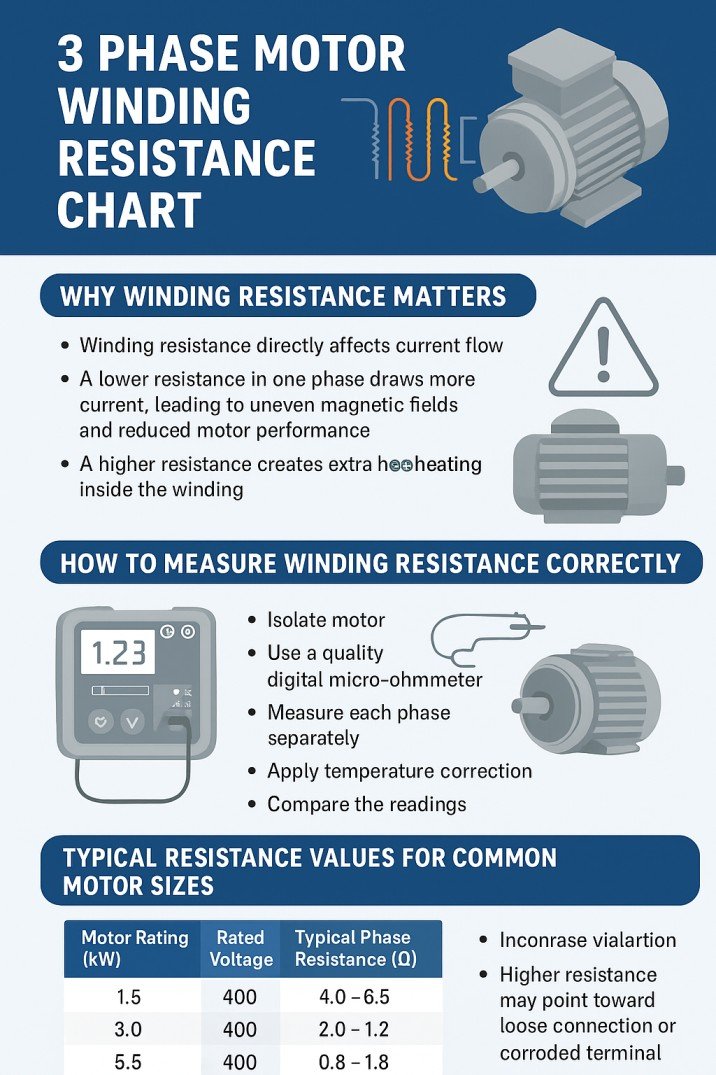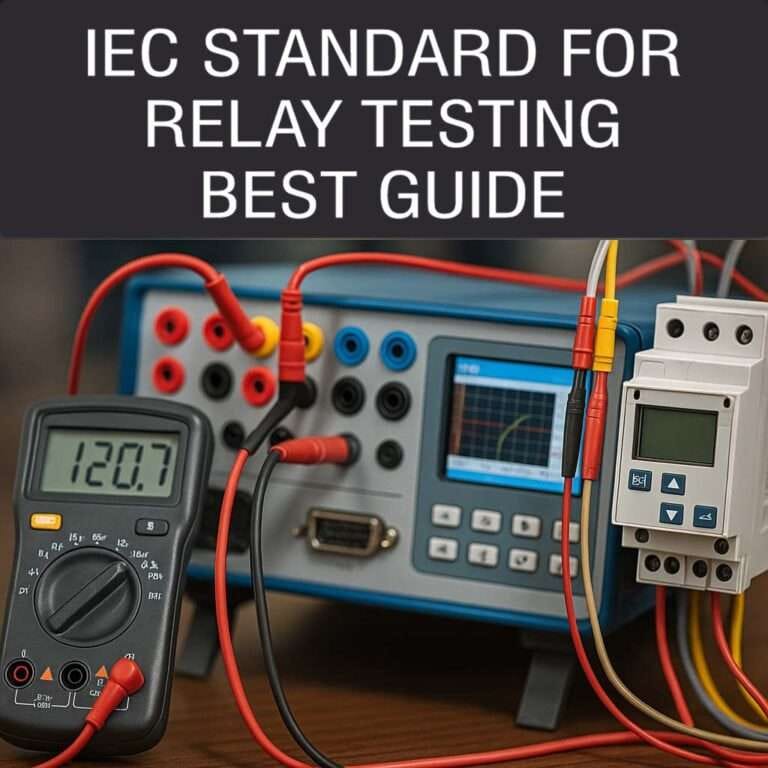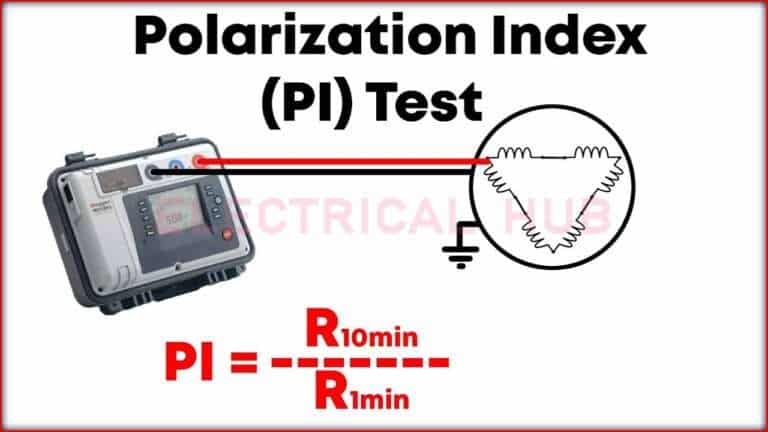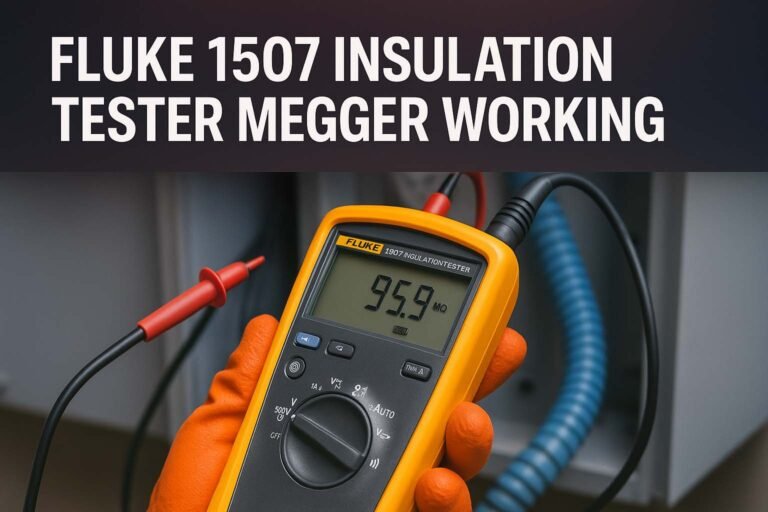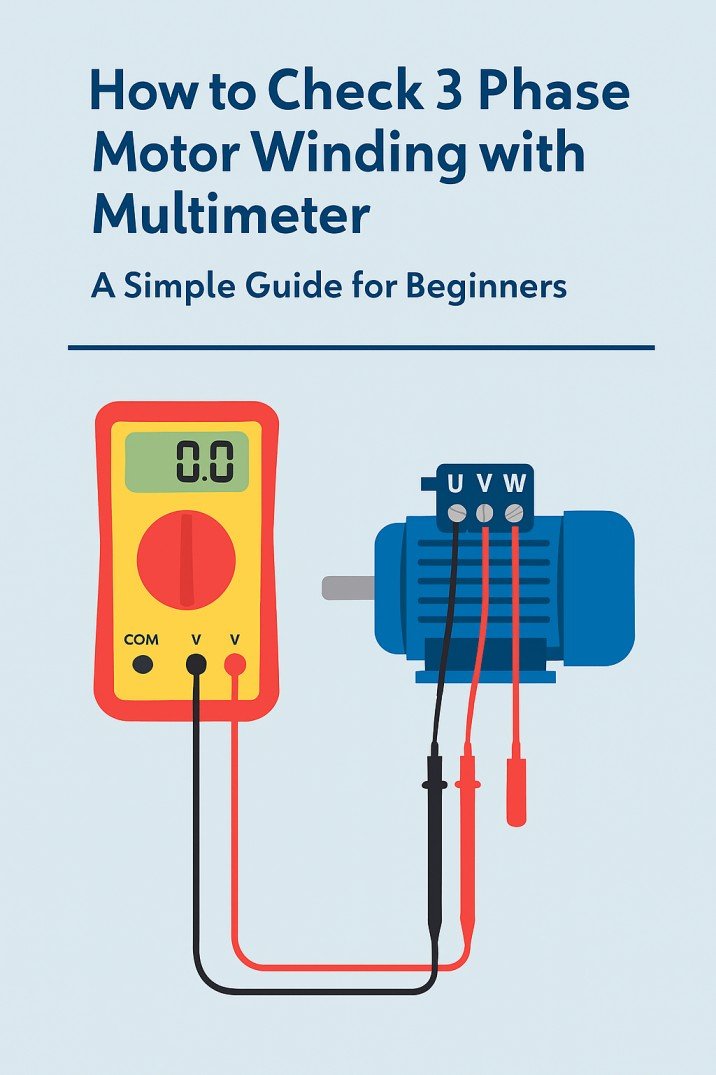How to Use Megger Insulation Tester MIT2500
The Megger insulation tester MIT2500 is a powerful diagnostic tool used to test the integrity of electrical insulation. It is widely used in industrial, commercial, and utility environments. This model is especially known for its high-voltage insulation resistance testing, which can go up to 2.5 kV. In this article, you’ll learn exactly how to use the MIT2500 effectively, understand its functions, and ensure safety during insulation testing.
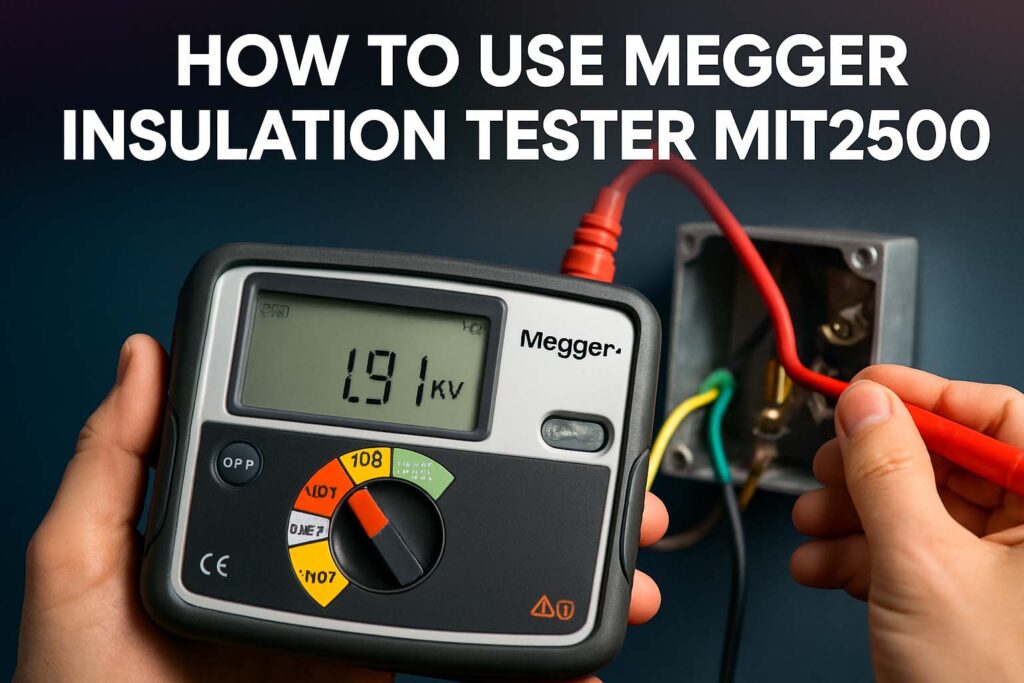
Let’s break down the process into clear, easy-to-follow steps. Whether you are a field technician, electrical engineer, or someone learning insulation testing, this guide is designed to help you master the Megger insulation tester MIT2500.
Understanding the Megger Insulation Tester MIT2500
The MIT2500 insulation tester is a handheld digital device made by Megger. It performs insulation resistance tests between 50V and 2500V DC. This makes it suitable for both low-voltage and medium-voltage equipment.
The device is built to perform in harsh environments, has an intuitive interface, and includes safety features like CAT IV 600V rating. It is suitable for testing transformers, motors, cables, switchgear, and other critical electrical equipment.
Here are some technical specifications to understand the device better:
| Specification | Value |
|---|---|
| Test Voltage | 50V, 100V, 250V, 500V, 1000V, 2500V |
| Insulation Resistance Range | Up to 200 GΩ |
| Output Current | 1.5 mA max |
| Display | Dual digital + analog arc |
| Power Supply | Rechargeable lithium battery |
| Safety Rating | CAT IV 600V |
Knowing the capability of your instrument is important before testing. Always read the manual and wear proper PPE.
Know more about How to Use Megger BM5200 Insulation Tester 5kV
Key Features of the Megger Insulation Tester MIT2500
- High insulation resistance testing up to 2.5 kV
- Accurate measurements even in noisy environments
- Live circuit detection with automatic test lockout
- Backlit display for low-light conditions
- PI and DAR test functions for insulation quality
- Timed testing and step voltage modes
These features allow the megger insulation tester MIT2500 to handle complex field conditions and deliver reliable results.
Preparations Before Using MIT2500
Before starting any test, ensure the equipment is de-energized. Confirm with a voltmeter or tester. Also:
- Disconnect the equipment from the system
- Discharge all stored energy in capacitors or cables
- Verify the MIT2500 battery is charged
- Set the correct voltage level for your insulation test
Clean terminals and connections to avoid inaccurate readings. Dirt and moisture can affect test outcomes.
Know more about Best Megger Insulation Tester for Industrial Motors
How to Use Megger Insulation Tester MIT2500 for Testing
Now let’s understand how to actually use the megger insulation tester MIT2500 in the field. Follow these steps carefully for a safe and successful insulation resistance test.
Step 1: Connect Test Leads Properly
Use the red, black, and guard leads. For most standard tests, only the red (positive) and black (negative) leads are needed.
- Connect the red lead to the conductor you are testing
- Connect the black lead to the ground or opposite conductor
- For enhanced accuracy, use the GUARD terminal to eliminate surface leakage effects
Ensure solid and secure connections. Loose leads can cause sparking or erratic readings.
Step 2: Set the Test Voltage
Rotate the voltage selector knob to the required voltage level.
For example:
- For low-voltage control cables: 500V
- For motors and generators: 1000V or higher
- For medium-voltage equipment: 2500V
The megger insulation tester MIT2500 allows for precise voltage selection. Always select voltage as per the insulation class of the equipment.
Step 3: Start the Insulation Test
Press and hold the TEST button to initiate the measurement. The device will begin sending a DC voltage and measuring insulation resistance.
Observe the digital reading on the display. A good insulation typically shows high resistance in the megaohm (MΩ) or gigaohm (GΩ) range.
Monitor the analog arc for stability. Sudden jumps indicate leakage or moisture.
Once you release the TEST button, the tester will automatically discharge the circuit. Always wait for the discharge to complete.
Know more about How to Use Megger Insulation Tester MIT320
Step 4: Interpreting the Results
The value you get is the insulation resistance between the tested components. General guidelines for interpretation:
| Insulation Resistance | Condition |
|---|---|
| >100 MΩ | Excellent insulation |
| 10 – 100 MΩ | Good insulation |
| 1 – 10 MΩ | Moderate, check further |
| <1 MΩ | Poor insulation, investigate |
If readings are below standard, inspect for water ingress, aged insulation, or physical damage.
Step 5: Record and Analyze Data
Document each test result in a log. Include:
- Equipment tested
- Test voltage used
- Measured resistance
- Date and time
- Ambient temperature
This helps track insulation degradation over time. The megger insulation tester MIT2500 also offers PI (Polarization Index) and DAR (Dielectric Absorption Ratio) testing for deeper analysis.
Safety Guidelines While Using MIT2500
Using the megger insulation tester MIT2500 involves working with high voltages. Keep these safety rules in mind:
- Always de-energize equipment before testing
- Use insulated gloves and safety glasses
- Stand on an insulated mat if working indoors
- Avoid touching test leads during the test
- Wait for automatic discharge before disconnecting leads
- Follow all local electrical safety codes
Neglecting safety can lead to electric shock or equipment damage.
Know more about What is Difference Between Megger and Insulation Tester
Common Applications of Megger Insulation Tester MIT2500
This insulation tester can be used in several professional environments. Here are some common use cases:
- Testing HV/LV motors and generators
- Checking power cables for insulation breakdown
- Assessing transformer windings for moisture ingress
- Verifying panel insulation in switchboards
- Inspecting solar PV circuits and combiner boxes
- Performing routine insulation audits in substations
Thanks to its CAT IV rating, the megger insulation tester MIT2500 is safe for use at the service entrance and utility side.
Benefits of Using Megger Insulation Tester MIT2500
Using this tool provides both preventive and predictive maintenance benefits:
- Helps detect early-stage insulation failure
- Reduces risk of unplanned equipment shutdown
- Ensures compliance with safety regulations
- Improves asset health and life expectancy
- Easy to carry and operate in the field
- Offers reliable testing under extreme conditions
With proper use, the megger insulation tester MIT2500 helps engineers make better maintenance decisions.
Maintenance Tips for Your MIT2500
To get long-term accuracy and performance from your MIT2500:
- Store it in a dry and dust-free place
- Clean terminals regularly
- Charge the battery periodically
- Calibrate yearly if used for compliance testing
- Inspect leads for any cuts or damages
Avoid using the tester if there are visible damages or abnormal behavior.
Know more about Best Megger Insulation Tester 10kV
Conclusion
The megger insulation tester MIT2500 is an advanced, reliable, and user-friendly tool for electrical insulation testing. It is suitable for a wide range of industrial and utility applications. By understanding how to use it correctly, you can prevent electrical failures, enhance system reliability, and ensure personnel safety.
With simple controls and robust features, even a beginner can learn to use the megger insulation tester MIT2500 effectively. Just remember to follow safety practices, choose the right test voltage, and understand the insulation resistance readings.
Follow Us on Social:
Subscribe our Newsletter on Electrical Insights for latest updates from Electrical Engineering Hub
#Megger, #MeggerMIT2500, #InsulationTesting, #ElectricalTesting, #MeggerTester, #MIT2500Guide, #ElectricalSafety, #InsulationResistance, #ElectricalTools, #TestInstruments, #ElectricalEngineer, #HowToUseMegger, #IndustrialMaintenance, #PreventiveMaintenance, #HighVoltageTesting
